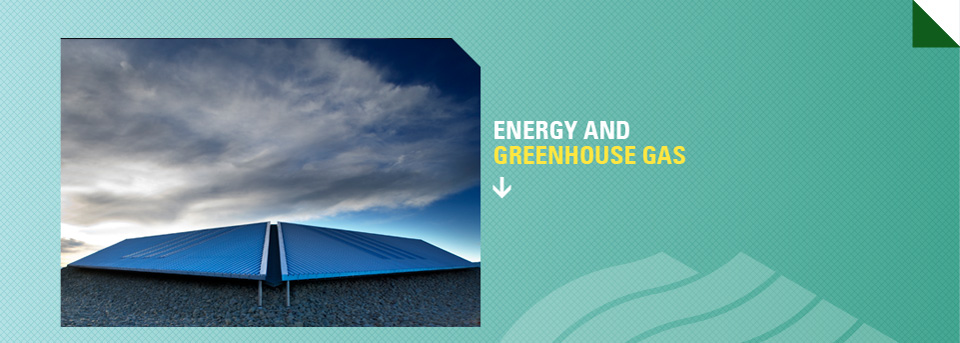BlueScope Steel’s plants employ modern energy efficient equipment wherever feasible. The Company is continuously seeking to reduce its energy and greenhouse gas intensity.

Lowest Quartile Greenhouse Gas Intensity
The steel manufacturing process consumes a large amount of energy. The chemical process used to make iron accounts for more than 80 per cent of the greenhouse emissions from and energy consumed within an integrated steelworks.
Carbon, in the form of processed metallurgical coal (coke), is the reducing agent used to convert iron ore to iron in a blast furnace. Carbon dioxide and other greenhouse gases are generated as unavoidable by-products of this process. The laws of chemistry, physics and thermodynamics dictate the amount of carbon used in the blast furnace. Current carbon usage is close to theoretical minimum levels due to our efficient furnace operations and practices. Greenhouse gas generation is heavily influenced by production output.
BlueScope Steel remains committed to progressively reducing its emissions and continues to play an active role in the global steel industry’s efforts to reduce greenhouse gas emissions. Any significant reduction in iron and steelmaking direct emissions will require a major technological breakthrough.
We are also committed to reducing the greenhouse gas intensity of our products and improving the energy efficiency of our operations. The Company seeks to maintain facility greenhouse gas intensities within the lowest quartile of comparable facilities.
Current controls
BlueScope Steel’s plants employ modern energy efficient equipment wherever feasible. The Company is continuously seeking to reduce its energy and greenhouse gas intensity.
Initiatives implemented or under investigation to improve energy and greenhouse gas performance include:
- Capturing by product gases from steel making and painting processes and reusing them for heating and cogeneration.
- Development of process models to ensure fuels are used efficiently.
- Improving process control.
- Decommissioning or upgrading of older, inefficient equipment.
- Identifying and minimising gas leaks.
- Increasing use of natural light in buildings.
- Turning off or idling equipment when not in use.
- Making increased use of environmental measurement tools to monitor processes.
Performance
Following the reline and return to service of No. 5 Blast Furnace in FY2009 – FY2010, BlueScope’s total production volumes increased to near full capacity. Total energy consumption consequently increased slightly, and the Company’s net energy intensity reduced as manufacturing efficiencies were gained.
In FY2011, BlueScope Steel's total Scope 1 (direct) and Scope 2 (indirect) greenhouse gas emissions totalled 15.9 million tonnes CO2 emissions and greenhouse gas intensity (based on tonnes of raw steel) remained consistent.
With the cessation of steel export activities during FY2012, plant utilisation rates will be lower and as a result, are expected to adversely influence near term greenhouse gas intensities. BlueScope Steel remains focussed on reducing greenhouse gas intensity. It is expected over time that continual improvement of emissions can be achieved off the new production baseline
|
Regional Break-up Million tonnes CO2 emissions per annum |
Scope 1 | Scope 2 |
|---|---|---|
| Aust/NZ | 13.17 | 1.86 |
| North America | 0.13 | 0.51 |
| Asia | 0.09 | 0.16 |

